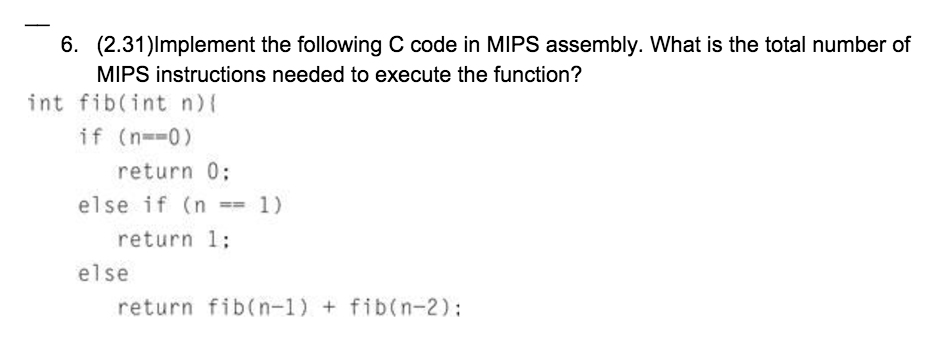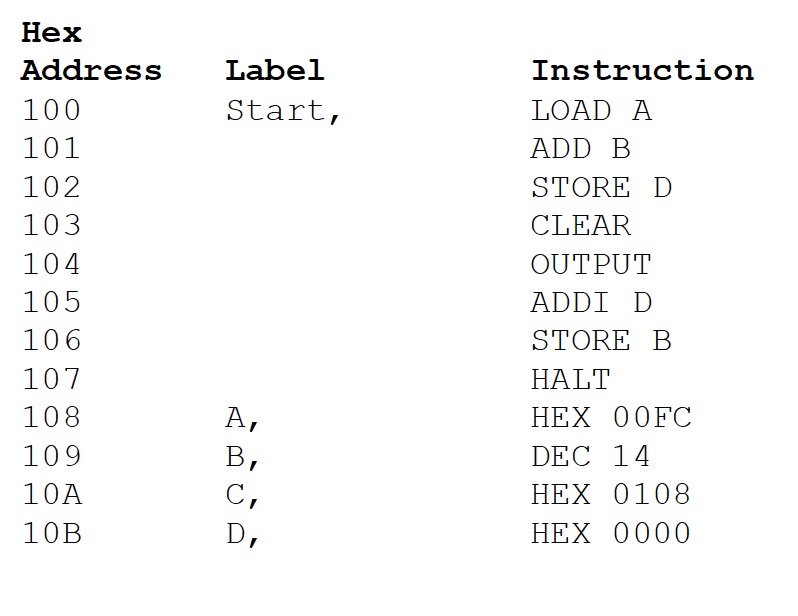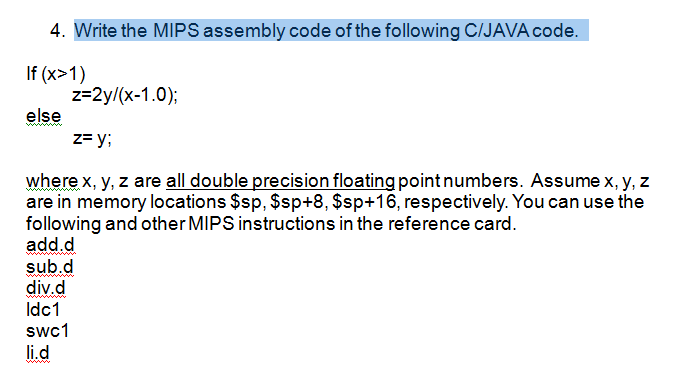


GCC’s optimizers do not treat this code like the non-volatile code in theĮarlier examples. "or %%rdx, %0" // 'Or' in the lower bits. "shl $32, %%rdx \n\t " // Shift the upper bits left. Reprint the timestamp asm volatile ( "rdtsc \n\t " // Returns the time in EDX:EAX. : "=a" ( msr ) : : "rdx" ) printf ( "msr: %llx \n ", msr ) // Do other work. Uint64_t msr asm volatile ( "rdtsc \n\t " // Returns the time in EDX:EAX. The total number of input + output + goto operands is limited to 30.
How to write c code to yield the following assembly code how to#
GCC’s optimizers do not know about other jumps therefore they cannot takeĪccount of them when deciding how to optimize. The list of all C labels to which the code in theĪsm statements may not perform jumps into other asm statements, When you are using the goto form of asm, this section contains Clobbers A comma-separated list of registers or other values changed by theĪssemblerTemplate, beyond those listed as outputs.Īn empty list is permitted. InputOperands A comma-separated list of C expressions read by the instructions in theĪssemblerTemplate. OutputOperands A comma-separated list of the C variables modified by the instructions in theĪssemblerTemplate. It is aĬombination of fixed text and tokens that refer to the input, output,Īnd goto parameters. Parameters ¶ AssemblerTemplate This is a literal string that is the template for the assembler code. Here is an example of basic asm for i386: Mechanism to provide different assembler strings for different dialects. masm command-line option (see x86 Options). On targets such as x86 that support multiple assembler dialects,Īll basic asm blocks use the assembler dialect specified by the Registers you might use %eax in basic asm and This results in minor differences between basicĪsm strings and extended asm templates.

Processing dialects or any of the % operators that are available withĮxtended asm. Verbatim to the assembly language output file, without The compiler copies the assembler instructions in a basic asm Since GCC does not parse the AssemblerInstructions, it has no Symbol errors during compilation if your assembly code defines symbols or Under certain circumstances, GCC may duplicate (or remove duplicates of) yourĪssembly code when optimizing. Labels are only supported in extended asm.

GCC does not know about these jumps, and therefore cannot takeĪccount of them when deciding how to optimize. Relative to other code, including across jumps.Īsm statements may not perform jumps into other asm statements. Note that GCC’s optimizers can move asm statements If certain instructions need to remainĬonsecutive in the output, put them in a single multi-instruction asm To access C data, it is better to use extendedĭo not expect a sequence of asm statements to remain perfectlyĬonsecutive after compilation. Safely accessing C data and calling functions from basic asm is moreĬomplex than it may appear. With the naked attribute also require basic asm Or write entire functions in assembly language. You can use this technique to emit assembler directives,ĭefine assembly language macros that can be invoked elsewhere in the file, Outside of C functions, you must use basic asm. Extended asm statements have to be inside a Cįunction, so to write inline assembly language at file scope (‘top-level’),.However, there are two situations where only basic asm Using extended asm typically produces smaller, safer, and moreĮfficient code, and in most cases it is a better solution than basicĪsm.


 0 kommentar(er)
0 kommentar(er)
